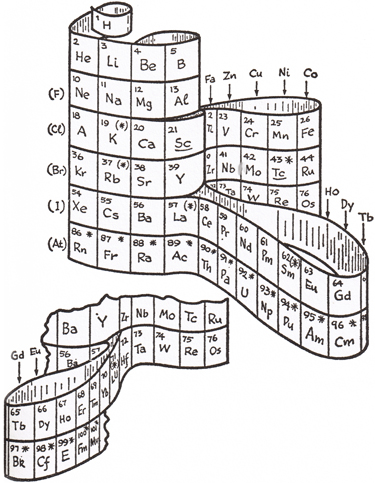George Gamow
 discoveries all in the quest to better understand the world and the universe. One man that deserves attention is Russian cosmologist and theoretical physicist named George Gamow. He grew up in revolution and wartime Russia, studied cosmology under Alexander Friedmann, and completed his PhD in 1928. He also worked on quantum mechanics at Göttingen, Copenhagen, and Cambridge, solving a major puzzle by explaining how an alpha particle can "tunnel" out of an atomic nucleus.
discoveries all in the quest to better understand the world and the universe. One man that deserves attention is Russian cosmologist and theoretical physicist named George Gamow. He grew up in revolution and wartime Russia, studied cosmology under Alexander Friedmann, and completed his PhD in 1928. He also worked on quantum mechanics at Göttingen, Copenhagen, and Cambridge, solving a major puzzle by explaining how an alpha particle can "tunnel" out of an atomic nucleus.
He was unhappy in Russia, and eventually defected to the United States, to George Washington University in D.C. While not cleared to work on the Manhattan Project, he participated briefly in the development of the hydrogen bomb - as well as aiding in the development of the double helix with Watson & Crick.
Gamow introduced nuclear theory into cosmology and laid the foundations for research into the levels of helium and hydrogen in the atmosphere. These gases make up 99% of matter. This could be explained by the reactions which occurred in the Big Bang - which led to the explanation of the Big Bang Theory.
In his middle and late career, Gamow focussed more on teaching and was a highly successful science writer, with numerous books still in print over a half-century after their initial publication. As an educator, Gamow recognized and emphasized fundamental principles that were unlikely to become obsolete, even as the pace of science and technology accelerated. He also conveyed a sense of excitement with the revolution in physics and other scientific topics of interest to the common reader. Gamow himself prepared the illustrations for his books, which added a new dimension to and complemented what Gamow intended to convey in the text.
Illustrating the Atom in Philosophy and Chemistry and Matter Earth and Sky he just naturally found it "convenient to represent the periodic system of elements by a three-dimensional spiral structure" with a drawing almost exactly like one I made, which led to the Alexander Arrangement of Elements patent.


< BACK